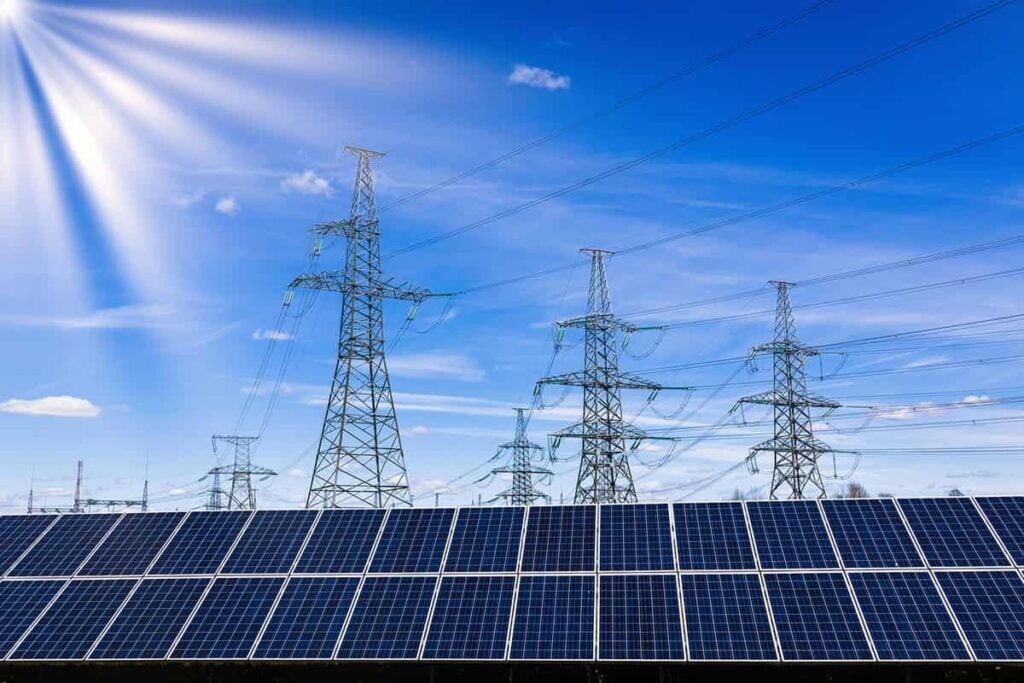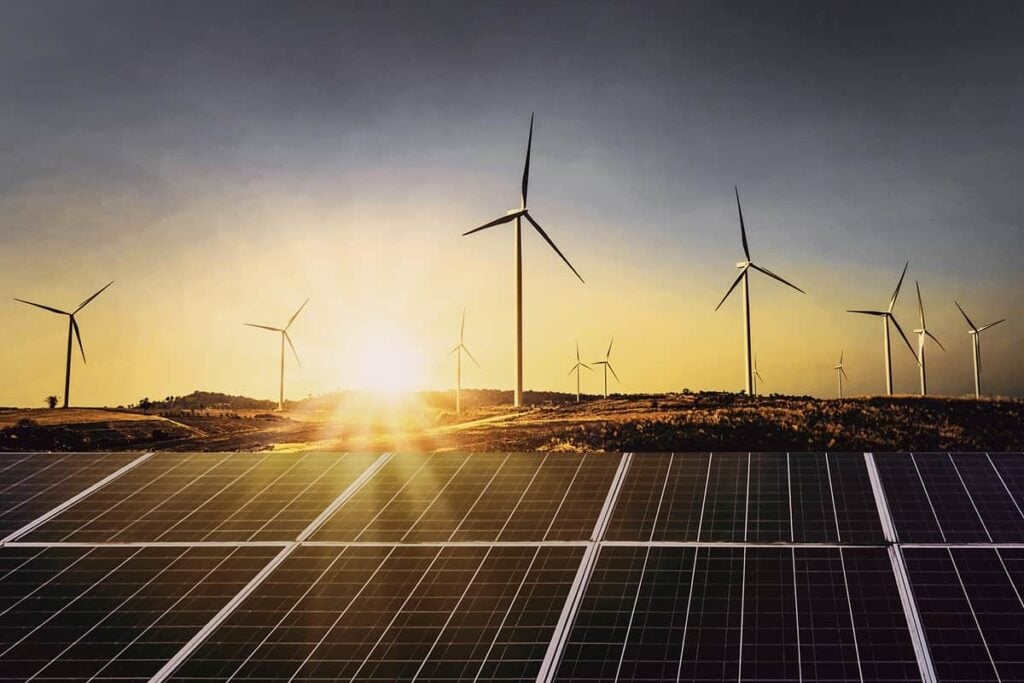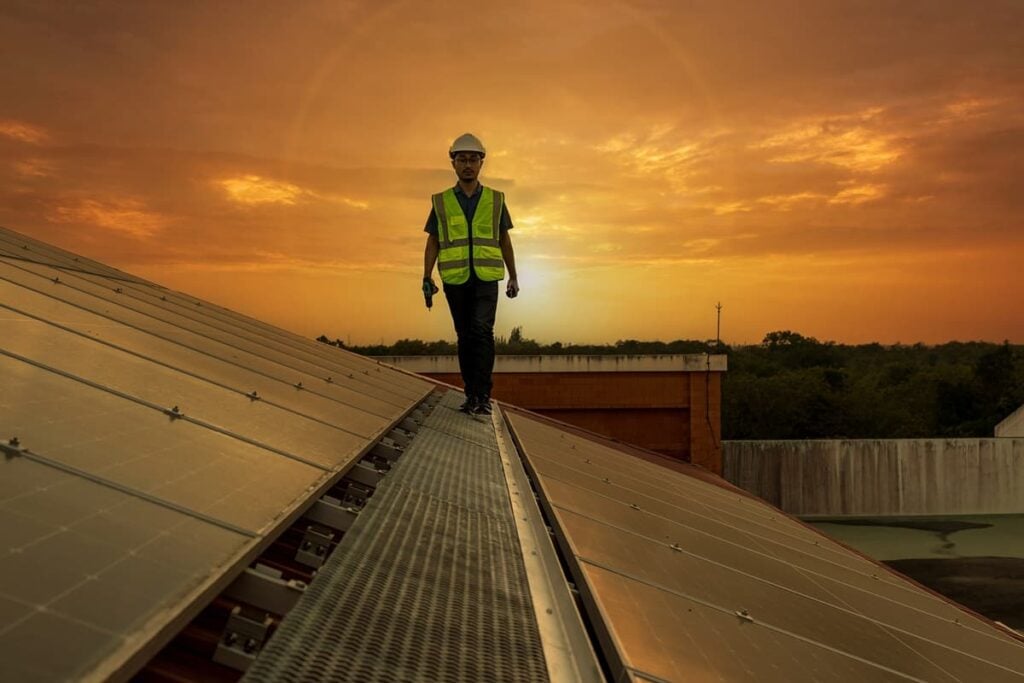A Geothermal Energy Stock for Investors
Table of contents

The 1883 eruption of Krakatoa was among the most severe volcanic explosions of modern times with energy released equivalent to 200 megatons of TNT – about 4X that of the world’s largest nuclear device, Tsar Bomba. Why not use all that pent up energy to produce electricity which we can then use to mine cryptocurrencies that will eventually become worthless?
It’s called geothermal energy, and in a recent article we looked at how it might compete with other renewable and non-renewable energy sources. While geothermal costs more than wind – the cheapest energy source based on Lazard’s Levelized Cost Of Energy (LCOE) analysis – newly built geothermal power plants are still competitive with both carbon-based and sustainable energy resources. While wind and solar lead alternative energy investments, geothermal power plants can diversify the weather risk of other renewables since they use the natural heat of Earth’s core to generate electricity or heat – something that is stable and independent of surface conditions. But it’s much less commonplace than you might think.
Why Geothermal is Lagging
The installed capacity for geothermal energy worldwide is just above 14 GW – way below that of wind (600 GW) and solar (500 GW). According to industry estimates, the electrical potential of geothermal resources is 10 to 100 times what’s currently being generated, not to mention the potential heating applications which could displace fossil fuels. There’s loads of room for growth. Geothermal won’t be resource constrained for at least 50 years, and the International Energy Agency predicts a growth of 28% or 4 GW over the next five years based on planned projects, half of which will happen in the Asia Pacific.

That’s a Compound Annual Growth Rate (CAGR) of about 5% a year, much less than the recent annual growth of wind (9.6%) and solar (20%), the leading renewables on the energy market. One reason geothermal energy is lagging in adoption may be the upfront cost of geothermal power plants, about $2,500 per kilowatt of capacity. The price for one kilowatt of onshore wind is about $2,000 which makes onshore wind farms 20% cheaper up front. Besides the high capital costs and long payback periods, geothermal power plants have the largest commercially available minimum power units. While photovoltaic panels and wind turbines can be built in smaller modules, geothermal power plants only come online in large chunks of capacity which translates to larger investments and more commitment up front. This, combined with difficulties in assessing the resources available in reservoirs, makes geothermal a less popular investment around the globe, even in places where there is lots of volcanic activity.

Geothermal may be lagging behind other renewables but it’s not out of the race. Many countries, particularly ones situated on large geothermal reservoirs, are developing new projects to diversify their energy mix and enjoy the benefits of this stable energy resource. At the moment, the US leads the world in geothermal installed capacity with 3.6 GW and an additional 1.2 GW under development. Turkey has been steadily building its capacity from nothing over the past decade, and has recently reached 1.2 GW, enough to take fourth place globally. Japan, the tenth country by capacity, has ambitious expansion plans as well – the government wants to supply 10% of the country’s energy needs from geothermal power by 2050.
Whether or not you think geothermal will outperform, it’s still good to know if there are any pure-play stocks which retail investors might use to gain exposure to this theme. Let’s take a look at Ormat Technologies, a publicly listed geothermal power company, to see if the company’s shares can provide exposure to the steady, stable growth of geothermal energy.
A Pure-play Geothermal Energy Stock
Headquartered in Reno, Nevada, Ormat Technologies (ORA) is a $3.2 billion renewable energy company that’s listed on the New York Stock Exchange and is presently the third largest holding in the iShares Global Clean Energy ETF. Ormat has developed a proprietary technology that acts as a closed system, using heat from geothermal fluid to power its generators, and re-injecting the cooled, condensed fluid into the reservoir to maintain reservoir pressure. The company’s energy converter technology is not only used in geothermal power plants but recovered energy power plants as well. These are built next to cement plants, gas processing plants, and any industry installation that generates large amounts of excess heat. Ormat uses its thermodynamic know-how to capture unused waste heat from these industrial processes and convert it to electricity to be reused later or sold to the grid. Besides building and operating heat-based power plants, Ormat has recently expanded its services to energy storage and management, helping utility companies and large-scale commercial consumers optimize their energy use.
Ormat is the only vertically integrated company in the geothermal sector, which means it’s present in all steps of the value chain from exploration through plant design to financing and operating power plants. This means that partners can choose the level of involvement Ormat has in each project. Ormat can simply supply parts, the whole power plant, or its know-how, but can also run a project from start to finish, including ongoing operations. The company divides their business into two primary segments:
- The Electricity Segment – (71% of revenues) – covers geothermal and recovered energy plants owned and operated by Ormat.
- The Product Segment – (28% of revenues) – responsible for engineering, manufacturing, and construction works on power projects owned by someone else.
In 2018, the Electricity Segment had 0.9 GW capacity operating at 25 locations with 94% of these power plants using geothermal. This means that Ormat owns and operates 6% of the world’s geothermal energy generation with division revenues of $510 million last year.

The Product Segment of Ormat has built 180 power plants and installed over 2.9 GW of geothermal and recovered energy power plants over the years, so it’s roughly responsible for 21% of the world’s installed geothermal capacity. The division posted revenues of $202 million in 2018, slightly lower than the $225 million it generated in 2017.
Those of you who are good at math may have noticed our earlier numbers didn’t add up. That’s because of the company’s Energy Storage and Management division which is responsible for the remaining 1% of revenues. Based on what we’ve seen so far, it’s easy to conclude that Ormat is a pure-play geothermal energy stock.
Challenges and Sustainable Growth
Year over year, Ormat grew its revenues by 3.8% which was offset by a 5.8% increase in costs, resulting in slowing growth and a net profit of $98 million in 2018. While the company has managed to consistently grow its revenues since 2014, its increasing operating expenses and costs associated with the new electricity storage division caused their profits to stagnate between $89 million and $132 million these past four years.

Ormat plans to achieve future earnings growth through organic capacity expansion, acquisitions, and increased efficiencies across the entire value chain. The company has 38 on-going site exploration and development projects across the globe that will provide organic growth. Thanks to its vertical integration, the company has so far managed to reduce upfront capital expenses of projects as well as the operating cost of power plants, and increase electricity margins at the same time, a trend that will help bring costs under control.

Market expectations for Ormat have been positive over the years with the company’s share price increasing +17.4% over the past rolling year and +117% over the past five years, significantly higher than the growth of the geothermal market and besting the S&P 500 return over both time frames.
Conclusion
Geothermal power may not get the same attention as wind or solar, but it holds promise. Ormat has managed to consistently grow its portfolio and revenues while increasing efficiencies and presents a sustainable growth trajectory for anyone interested in exposure in the geothermal sector. As more states and countries aim for a carbon-free future, the business potential of all sustainable resources will become more pronounced and geothermal can be a great way to diversify your green energy investments.
Sign up to our newsletter to get more of our great research delivered straight to your inbox!
Nanalyze Weekly includes useful insights written by our team of underpaid MBAs, research on new disruptive technology stocks flying under the radar, and summaries of our recent research. Always 100% free.














